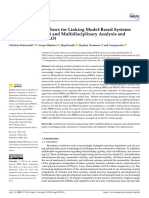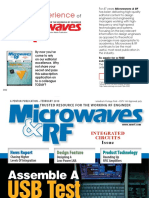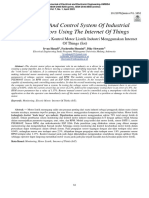0% found this document useful (0 votes)
120 views32 pagesModel-Based Engineering for Antenna Design
The document discusses using model-based engineering (MBE) to optimize the design of phased array antenna systems. It aims to develop an integrated and modular analytical model of a phased array antenna to evaluate performance tradeoffs. This will allow exploring the design space through multidisciplinary system design optimization techniques. The goals are to connect antenna performance models to system and mission models to enable broader trade studies and identify configurations that optimize cost, performance, and risk. MBE approaches like this can speed up the design process and product development cycle.
Uploaded by
Mohan Babu ACopyright
© © All Rights Reserved
We take content rights seriously. If you suspect this is your content, claim it here.
Available Formats
Download as PDF, TXT or read online on Scribd
0% found this document useful (0 votes)
120 views32 pagesModel-Based Engineering for Antenna Design
The document discusses using model-based engineering (MBE) to optimize the design of phased array antenna systems. It aims to develop an integrated and modular analytical model of a phased array antenna to evaluate performance tradeoffs. This will allow exploring the design space through multidisciplinary system design optimization techniques. The goals are to connect antenna performance models to system and mission models to enable broader trade studies and identify configurations that optimize cost, performance, and risk. MBE approaches like this can speed up the design process and product development cycle.
Uploaded by
Mohan Babu ACopyright
© © All Rights Reserved
We take content rights seriously. If you suspect this is your content, claim it here.
Available Formats
Download as PDF, TXT or read online on Scribd
/ 32























































































